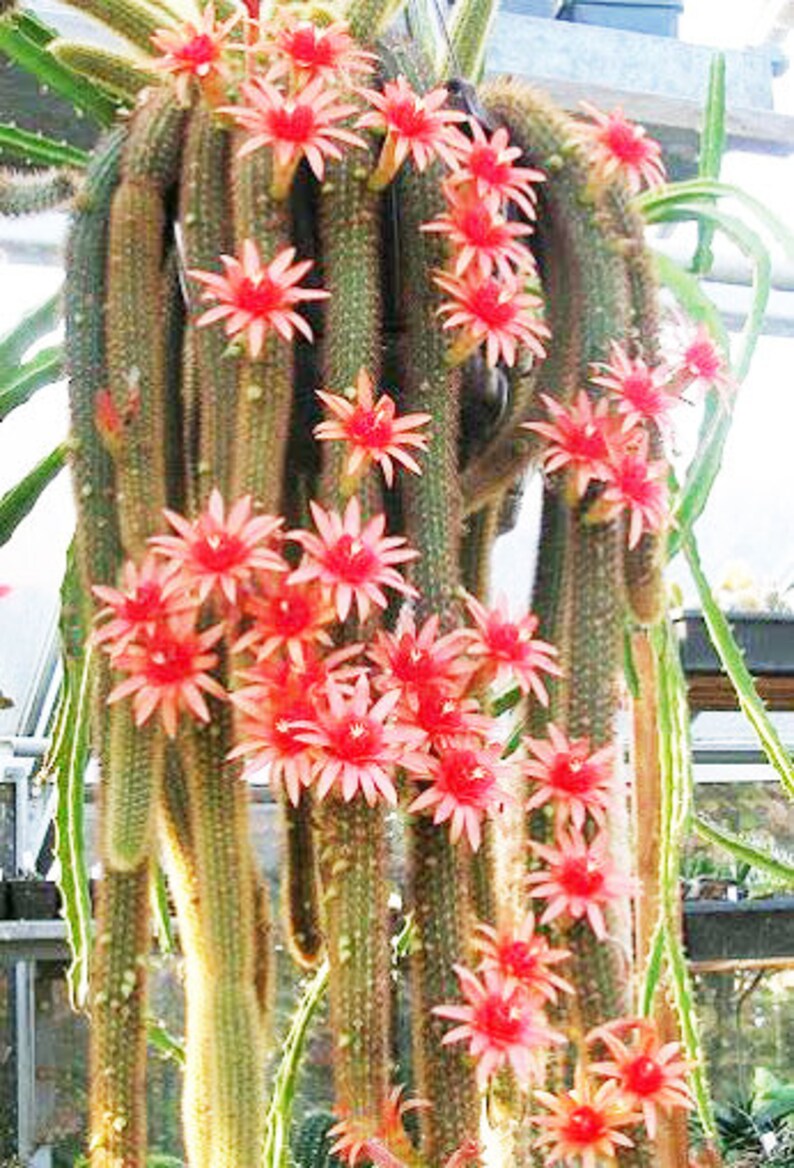

Many say that sub-freezing temperatures are acceptable, while others encourage growers to keep it safe from cooler temperatures. There is some controversy on the general cold hardiness of this plant. Sustained exposure to cooler weather will harm your cactus. But do be responsive, again, if you keep your cactus outdoors, to sudden drops in temperature. TemperatureĬooler weather is fine periodically. However, if you live in an area with particularly harsh sunlight and keep your cactus outdoors, you may want to place it somewhere where it will get more regular shade.
#Monkey tail cactus full#
Monkey Tail Cactus is a desert plant and can tolerate full sun, within reason. It thrives in USDA hardiness zones 9a-11b. Monkey Tail Cactus prefers bright, indirect sunlight – up to 10-14 hours per day is ideal.
#Monkey tail cactus how to#
Keep reading for tips on how to help your Monkey Tail Cactus thrive! Light However, there are specific things to keep in mind when growing any cactus. Overall, the Monkey Tail Cactus is a simple plant to care for. Like many other succulents, it survives off of the moisture in the air by storing water in its stems. Its columns, in particular, are soft and droop downwards, which is different than the upright standing outgrowths of most desert cacti. In fact, Monkey Tail Cactus is also classified as a Lithophyte, meaning it has a shallow root system that allows it to grow well in rocks and crevices – like that of its native habitat.Ī part of the genus Cleistocactus, the stems of the cacti grow in a column-like manner. There, it grows in rocky soil along cliffs and hills. Monkey Tail Cactus, Hildewintera colademononis, is a member of the Cactaceae family and native to South America, specifically the Bolivian countryside in Santa Cruz.

This succulent boasts long stems that have white, tiny spines on them. Surface sowing is the best seeds germinate in 14-28 days at 20° C, remembering that seedlings dislike strong light and dry conditions.The Monkey Tail Cactus is an attention grabber. It flowers freely indoors too if conditions suit it. This plant needs a period of cool rest in winter to produce flowers abundantly. Winter care presents no problems at temperatures from 5 to 15 degrees centigrade with plenty of light, but frost hardy to -2☌ for short periods if very dry. Give an occasional high potassium liquid feed during the active growing period. The plant survives outside without protection in winter (cold hardy to -2° ) but is then somewhat prone to rot, too. Keep rather dry as soon as the temperature starts dropping in October and keep it dry in winter. Kept this way, plants will show a healthy growth. This can be done weekly or more frequently during the summertime, if the weather is sunny enough, but allow to dry fully before watering again. They require moderately watering through the growing season. Sun Exposure: Require filtered bright light, partial sun or light shade, but not in full sun that will sunscald it.

However, repotting doesn't necessarily mean they'll need larger containers. Since they are rapid growers need plenty of space for their roots, repotting with fresh potting-mix should be done every other year or when the plant has outgrown its pot. It suited to hanging baskets as well as pots. colademononis is of easy culture, which makes it a good cactus for beginners. It is free-flowering and the outsize bright red blooms are particularly decorative.Ĭleistocactus winteri subs. The common name “monkey's tail” refers to the appearance of the hairy stems. colademononis, sometimes listed under its old name of Hildewintera colademononis, is a fantastic plant with very long white and soft, hairlike spines.


 0 kommentar(er)
0 kommentar(er)
